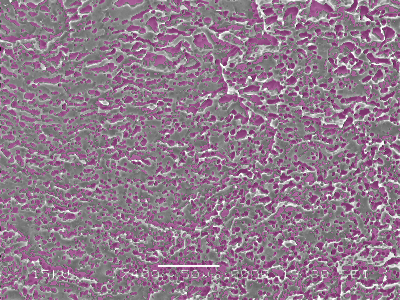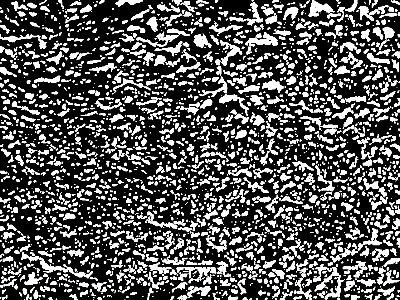
|

|

|
| (a) Input SEM scan | (b) Pore detection | (c) Porosity |
Cheese Microstructure Image Analysis
Many varieties of cheese are salted by immersion in brine (salty water) instead
of by direct salting of the curd during cheese making. Brine salting causes
large gradients of salt and moisture to develop within the structure of blocks
of cheese. In general, moisture will be low and salt content will be high at the
surface of a brine-salted cheese. The salt uptake behavior is affected by brine
concentrations. There appears to be some critical concentration of salt in brine
above which there is a large negative impact on salt uptake due to the creation
of a barrier layer at the surface of the block of cheese.
Salt uptake is related to cheese porosity, tortuosity of the
channels of aqueous phase within the structure of cheese, viscosity of the
acqueous phase, and interaction of sodium with the protein matrix.
The objective of this research was to determine how brine concentration at
constant temperature influences the microstructure of the surface barrier layer
that develops in Ragusano cheese during brine salting.
Among the factors contributing to salt uptake, porosity and tortuosity can be
evaluated by applying image processing and computer graphics techniques to 2D
and 3D cheese scans. Cheese samples are scanned using either Scanning
Electron Microscopy (SEM), or Computed Tomography (CT). The scans are processed
to evaluate porosity and tortuosity. The following figure shows an example of
pore estimation on a SEM image (the dynamics of the scans is reduced to fit the
display range).

|

|

|
| (a) Input SEM scan | (b) Pore detection | (c) Porosity |